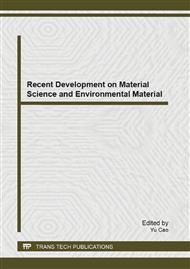p.132
p.139
p.143
p.149
p.153
p.159
p.162
p.166
p.173
Effects of Sepiolite and Mycorrhizals on Nutrient Element Absorptions of Maize in Heavy Metals Contaminated Soil
Abstract:
Effects of adding sepiolite and mycorrhizal in soil polluted by heavy metals on nutrient elements in maize were studied. Results of pot culture experiments indicate that sepiolite treatment and combined treatment of sepiolite and mycyorrhizals can promote phosphorus and calcium absorptions by shoots and roots of maize, and prohibit their absorptions of manganese and magnesium.The sepiolite treatment decrease iron concentrations in shoots and roots of maize. The combined treatment of sepiolite and mycorrhizals give no significant effect on iron concentrations in shoots. The treatments of Glomus mosseae and Glomus intraradices give no significant effects on concentrations of phosphorus and calcium in shoots and roots, but decrease magnesium concentration in them. They show no evident effect on concentrations of iron and manganese in shoots, but increase the manganese concentration in roots. The treatment of Glomus intraradices increases iron concentration in roots. The two kinds of mycorrhizals give different performances.
Info:
Periodical:
Pages:
153-158
Citation:
Online since:
September 2013
Authors:
Keywords:
Price:
Сopyright:
© 2013 Trans Tech Publications Ltd. All Rights Reserved
Share:
Citation:


